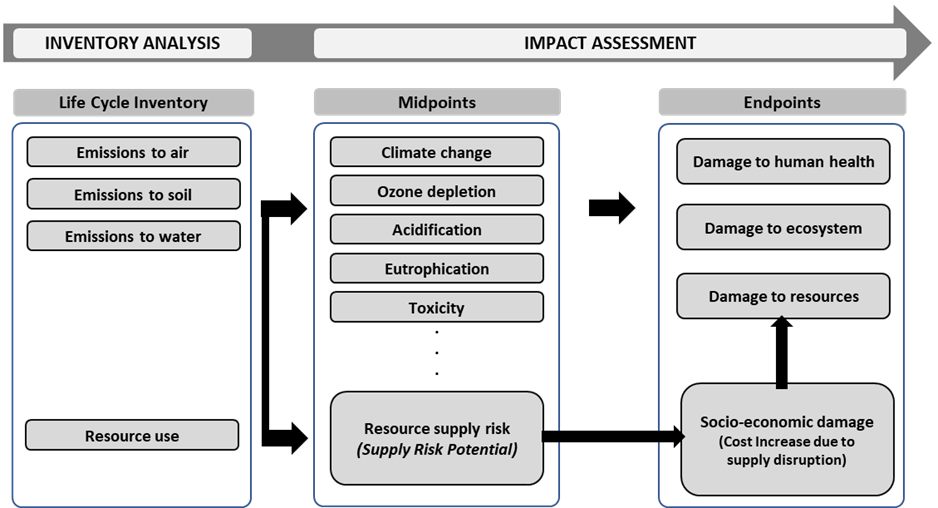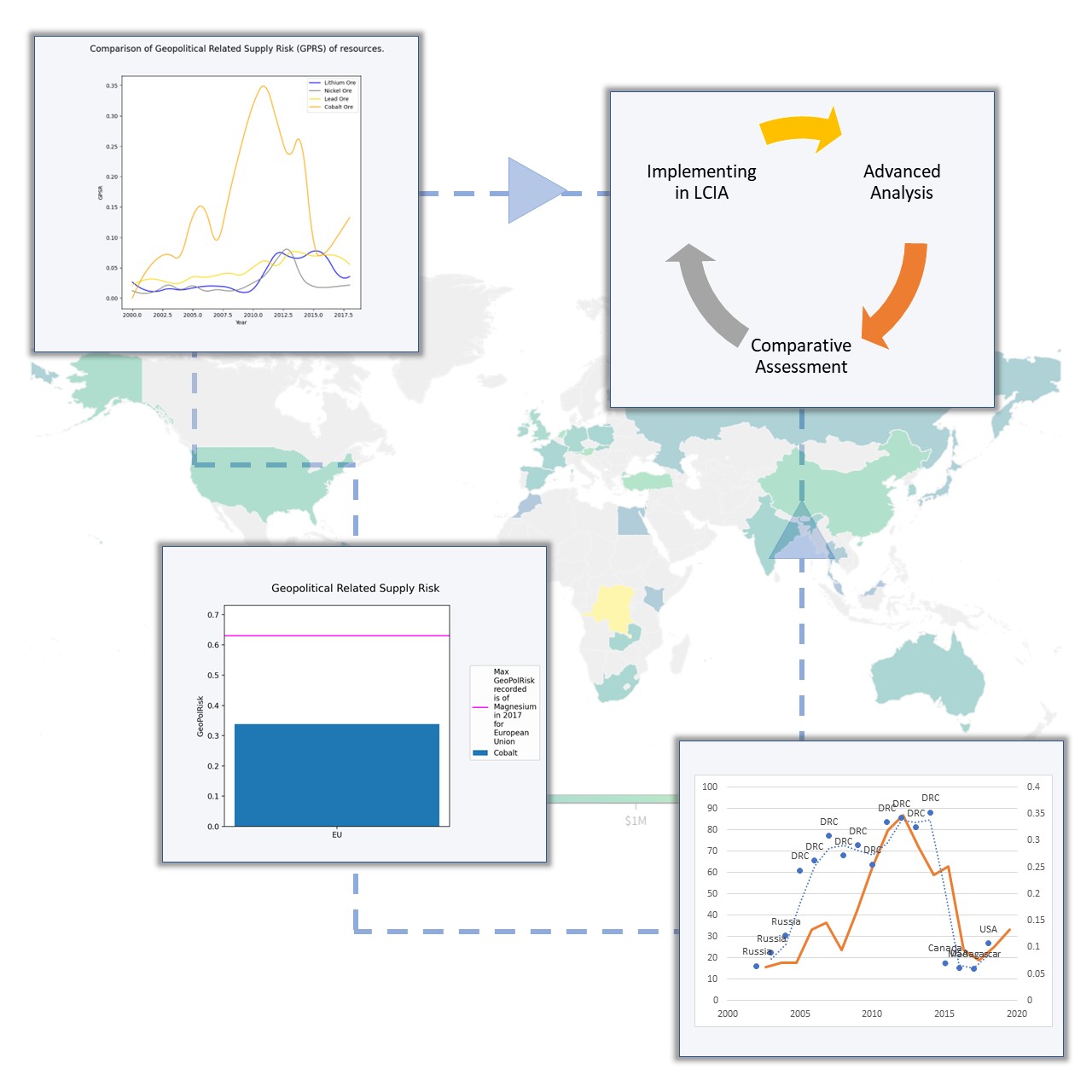The GeoPolRisk Method
The GeoPolRisk method is a product-level supply risk assessment method assesing the 'outside-in' impacts of resource supply disruption on a product system. It was developed to calculate the supply risk of a resource from the point of view of a country, region, or group of countries and serves to complement environmental indicators in LCA.
The GeoPolRisk method provides a value for the geopolitical related supply risk (GPRS) and a characterization factor for the midpoint indicator 'Supply Risk Potential' (CF)

Life Cycle Impact Assessment (LCIA) framework for integrated assessment of GeoPolrisk Method.
With the recent publication on the improved resource midpoint indicator1, the midpoint characterization factor for the supply risk potential indicator has three components; the Herfindahl-Hirchmann index, the Weighted Average of Import Shares (WTA), the yearly average price of the resouce (P)
Our extensive list of characterization factors (CFs) for 31 resources makes the GeoPolRisk method one of the most sought out indicator for the natural resources area of protection. The indicator represents amount of resources under imminent risk of supply disruption measured in monetary units.
Concentration of production of a resource in a country may also contribute to the supply risk of that particular resource. The normalized Herfindahl-Hirschman index (HHI) of a resouce, a component of the GeoPolRisk method, represents the production concentration of a resource ranging from 0 to 1 where 1 indicates the production of a resource is concentrated in one country.The
GPRS is the product of the HHI and the WTA, and the resulting value can be used as for comparing the risk associated with importing the resource in the perspective of different countries or same country importing a different resource
